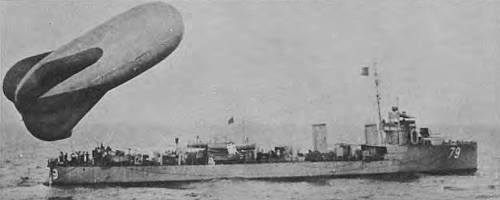- Author
- Issacs, Keith, AFC, ARAeS, Group Captain, RAAF (Retd)
- Subjects
- Naval Aviation
- Tags
-
- RAN Ships
- HMAS Adelaide I, HMAS Brisbane I, HMAS Australia I, HMAS Sydney I, HMAS Melbourne I
- Publication
- December 1973 edition of the Naval Historical Review (all rights reserved)

Information on early air operations from Royal Australian Navy ships is sparse, and even when such incidents are mentioned the details are vague and incomplete. For example, the next mention of air activity recorded in the Ship’s Log of Australia are two brief entries for 30 January 1918 – ‘9.30 Aeroplane arrived on board,’ and ‘1.30 Aeroplane flew off ship.’ There is every possibility that this was another take off from the ship’s deck by a Sopwith Pup, particularly in view of a further log entry for 5 February recording that at 9.30 a.m. work parties were ‘rigging ‘Q’ aeroplane platform.’ This is the first mention of a launching platform on Australia, and the 6.30 p.m. entry for the same day – ‘hoisted in aeroplane’ – probably refers to a Sopwith Ship’s Camel, as one of these aircraft was also allotted to Sydney about that time. It was not until July 1918 that the term ‘aeroplane’ was superseded in Australia’s log by specific mentions of ‘Camels’ and ‘Strutters.’ In summary, therefore, a Sopwith Ship’s Pup, on loan from HMS Dublin, was launched twice from a platform on Sydney on 8 and 17 December 1917, while another Ship’s Pup from Donibristle took off from the quarter deck of Australia on the 18th of that month; there is also the possibility that a Pup carried out a second deck take off from Australia on 30 January 1918.




